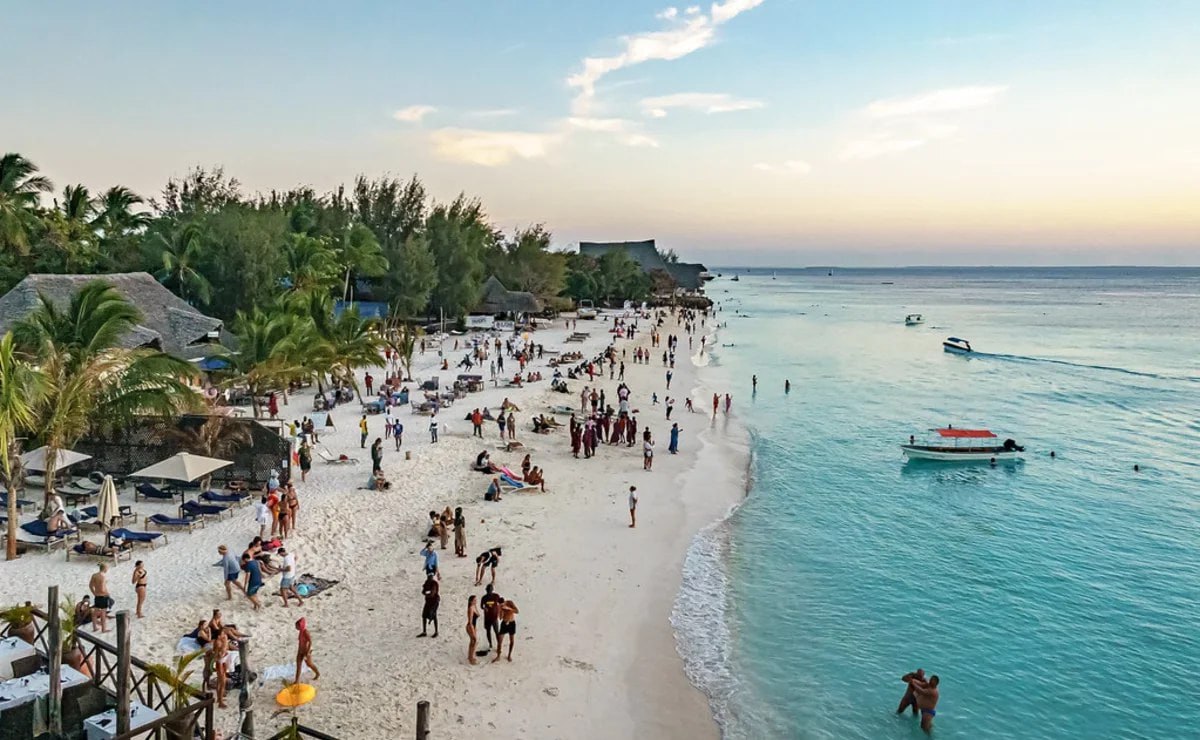Political Unrest and Its Impact on Tourism
DAR ES SALAAM – Approximately 500 Russian tourists currently find themselves stranded across Tanzania as political unrest and violent protests following the country’s October 29 general election have led to significant flight disruptions and communication outages across the East African nation .
The situation has created a stark contrast within the country. While the semi-autonomous archipelago of Zanzibar remains calm with its airport operational, the mainland has experienced substantial turmoil, including curfews, internet restrictions, and flight cancellations at major airports, leaving tourists struggling to depart .
The disruptions come amid a crucial period for Tanzanian tourism, which has been experiencing record-breaking growth. In 2024, the sector generated approximately $3.26 billion in revenue and contributed 17.2% to the nation’s GDP, underscoring the economic significance of every tourist currently unable to leave the country .
Election Chaos Triggers Nationwide Disruptions
Tanzania has been gripped by violence and political tension since the controversial general election on October 29, 2025. The vote, from which President Samia Suluhu Hassan’s main opponents were either jailed or barred on technicalities, has sparked widespread protests .
The opposition party Chadema has claimed that around 700 people have been killed in clashes with security forces, though official government figures are unavailable and a nationwide internet shutdown has made verification difficult . A diplomatic source cited by the BBC suggested there was credible evidence of at least 500 deaths .
In response to the unrest, authorities imposed a nationwide curfew from 6 p.m. to 6 a.m. and implemented an internet blackout, significantly complicating travel arrangements and leaving many tourists in the dark about their departure options .
Stranded Tourists and Operational Airports
The Russian Association of Tour Operators (ATOR) reported that about 500 Russian tourists are currently affected, with the majority located on the comparatively peaceful islands of Zanzibar .
“The archipelago is calm now, because the elections there have concluded,” a local source close to the country’s leadership told African Initiative .
However, the situation on the mainland is markedly different:
· Approximately 30% of the Russian tourists are believed to be in mainland cities like Dar es Salaam and Arusha, where the unrest is most severe
· Major airports including Dar es Salaam’s Julius Nyerere International Airport (DAR), Kilimanjaro International Airport (JRO), and Arusha Airport (ARK) have experienced significant cancellations and delays
· Several international airlines, including Emirates, have suspended flights to Dar es Salaam
The Russian Embassy in Tanzania confirmed it had received at least one request for clarification about the current situation from a Russian tourist in Arusha .
Safari Adventures and Beach Retreats: What Brings Russians to Tanzania
Russian tourists in Tanzania are primarily engaged in two of the country’s most famous attractions: wildlife safaris and Zanzibar’s pristine beaches.
Safari tourism focuses on the northern circuit, including legendary destinations such as Serengeti National Park, which welcomed over 589,000 visitors in 2024, and the Ngorongoro Crater . Tour operators emphasize that these safari itineraries typically avoid the troubled urban centers.
“As a rule, safari itineraries follow the route Manyara – Serengeti – Ngorongoro, with optional rest on Zanzibar, and do not include Dar es Salaam. Therefore, the unrest on the eastern coast does not affect holidays in the national parks or on the island,” the ITM Group explained .
Zanzibar’s beach tourism represents another major draw, with the archipelago receiving nearly 479,000 visitors in 2024 . The island’s more stable political situation – having already announced its election results – has provided a safer environment for tourists .
The Economic Stakes: Tourism’s Vital Role in Tanzania
The stranded Russian tourists represent a small fraction of a tourism sector that has become a cornerstone of Tanzania’s economy. The country welcomed 1.75 million tourists in 2024, a 12.4% increase from the previous year .
Table: Tanzania’s Tourism Sector at a Glance (2024)
Indicator 2024 Figures Growth from 2023
Total Tourist Arrivals 1,748,500 visitors +12.4%
Tourism Earnings USD 3,259.8 million +9.5%
Sector’s GDP Contribution 17.2% Up from 16.4%
Jobs Supported 1.5 million+ N/A
Hotel Occupancy Rate 74.5% Up from 69.8%
Europeans constitute the largest market at 39.6% of all arrivals, with Russians forming part of this contingent. North Americans follow at 18.3%, while African tourists comprise 21.7%, mainly from Kenya, South Africa, and Uganda .
The World Travel & Tourism Council’s 2024 research further emphasized the sector’s importance, noting that Travel & Tourism contributed TZS 18.6TN to the national economy and supported over 1.4 million jobs last year .
Challenges and Opportunities for Tanzanian Tourism
Despite its strong performance, Tanzania’s tourism sector faces several challenges that the current political unrest has highlighted:
· Infrastructure gaps in transportation networks and airport facilities
· High operating costs, including rising park fees and hotel rates
· Regional competition from neighboring Kenya and South Africa
· Climate change effects that could impact wildlife and natural attractions
The political instability and resulting travel disruptions represent an additional, significant challenge that could affect Tanzania’s competitiveness as a tourist destination if not resolved promptly.
Pathways to Recovery and Future Outlook
As the political situation evolves, the Tanzanian tourism sector’s resilience will be tested. The government has previously announced new investment opportunities in conference tourism at Mtumba Government City in Dodoma, including plans for an international conference centre, exhibition grounds, and hotels, supported by major infrastructure projects such as the SGR railway and Msalato International Airport .
The WTTC projects that Tanzania’s Travel & Tourism sector’s contribution to the GDP could reach TZS 30.9TN by 2034, with employment potentially growing to 2.25 million jobs – nearly one in every 15 workers in the country .
For now, tourism operators and government officials hope for a rapid normalization of the political situation to minimize damage to a sector that has become a critical engine of economic growth and employment for Tanzania.

Leave a Reply